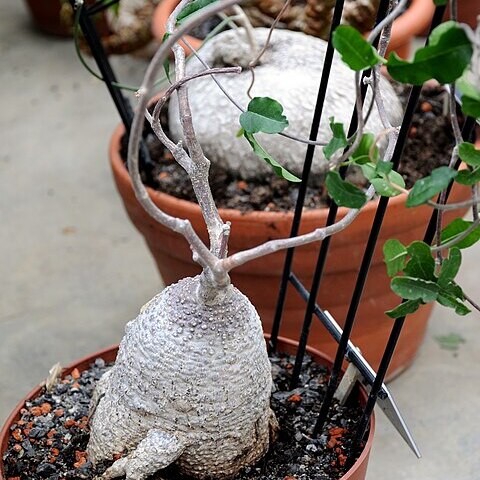A climber. It is a plant with a large storage organ near the ground. This is white and rough. It can vary in shape. It produces vines. The vines can grow 30 cm in a year. The leaves are dark green. They are 3-4 cm long and 1 cm wide. They have wavy edges. The flowers are green and 1.5 cm wide. The fruit are greyish pods 8 cm long.
Like F. capensis but climbing to 2 m from a tuber up to 1 m diam. Leaves ovate, green, sparsely pubescent to glabrous and slightly undulate.

